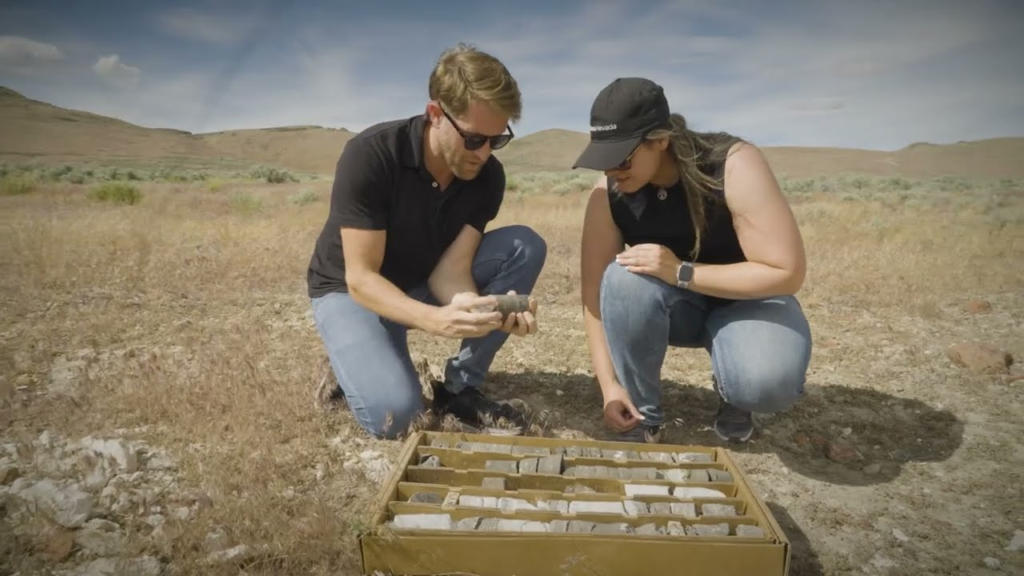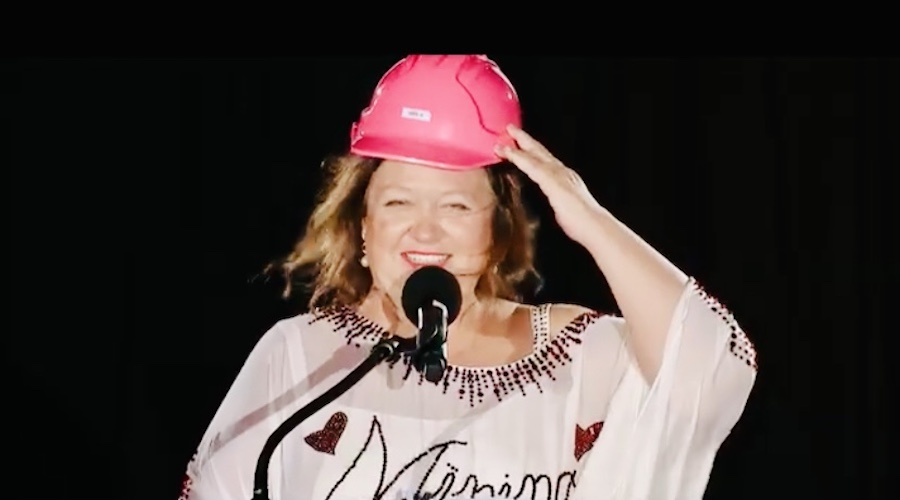US lithium clay projects secure backing despite extraction hurdles

The United States’ great hope for domestic lithium supply could lie in the massive-scale, long-life sediment-hosted deposits in its southwestern region. And even with tricky metallurgy to overcome and higher price tags than brine or hard rock deposits, experts say that with federal backing, these operations could become the continent’s energy transition backbone.
Most of the country’s sediment-hosted lithium projects are in Nevada. Projects like Lithium Americas’ (TSX: LAC; NYSE: LAC) Thacker Pass, Ioneer’s (NASDAQ: IONR; ASX: INR) Rhyolite Ridge, and Century Lithium’s (TSXV: LCE) Clayton Valley have big potential that’s drawing strategic investment.
Lithium clay projects are particularly important for North America as a domestic source of the mineral, which is critical for the energy transition and the growing demand for electric vehicles (EVs), according to Allan Pedersen, principal analyst for lithium with Wood Mackenzie.
“The metallurgy of extracting lithium from clay (sediments) is more complex and less proven than from brine or hard rock sources,” Pedersen said in an interview. “Despite their complexity and high capex, these projects are crucial for ensuring a stable, secure supply of lithium, reducing dependency on foreign sources, and supporting the broader goals of national security and economic growth.”
Lithium prices have dropped by two-thirds since last summer to $13,800 per tonne lithium carbonate in mid-June, according to Trading Economics. Even so, lithium exploration and development in the US have been boosted by growing demand for EV production, new extraction technologies and supportive government policies. US President Joe Biden’s 2022 Inflation Reduction Act and other measures have focused on bolstering domestic supply and processing to establish a fully integrated North American lithium-ion battery supply chain.
National security concerns
Currently, about 65% of lithium worldwide is processed in China. However, US lithium production is projected to increase 13-fold thanks to tax credits and other subsidies in the Inflation Reduction Act.
The International Energy Agency reports that demand for lithium in batteries last year was around 140,000 tonnes, an increase of over 30% compared to 2022, with batteries representing 85% of total demand. Benchmark Mineral Intelligence estimating a deficit of over 3 million tonnes of lithium by 2040, equivalent to 50 Thacker Pass projects.
“The United States will consume about a million tonnes of lithium carbonate equivalent by early next decade,” Ioneer managing director Bernard Rowe said in an interview. “Ensuring a secure and stable domestic supply is not just about bringing more lithium into the market; it’s about national security and maintaining a competitive edge in the global EV market.”
Cost comparison
Lithium clay projects under development are expected to have moderate to high operating costs due to complex chemical processing, positioning them between lower-cost brines and higher-cost hard rock mining. While brine projects benefit from cost-efficient solar evaporation, and hard rock projects face high energy and processing expenses, lithium clay projects could be competitive if scaled efficiently, Pedersen said.
Lithium Americas, whose $2.9 billion Thacker Pass is the most advanced sediment-hosted project in the US, announced backing from the US Department of Energy (DOE) in March. The miner has a conditional commitment for a loan of $2.2 billion — the largest-ever loan to a mining company from the DOE’s Loan Programs Office.
The loan is to help finance the construction of processing facilities at its project, which has the potential to become North America’s largest source of lithium for EVs. The plant is projected to produce an initial 40,000 tonnes of battery-grade lithium carbonate per year.
It also has the support of automaker General Motors, which invested $650 million in Lithium Americas for an exclusive offtake deal for the first 15 years of production, slated to start in 2027.
Metallurgically challenged
The US does have one producing lithium mine — Albemarle’s (NYSE: ALB) Silver Peak in Nevada — but it’s a small-scale brine operation.
The main challenge for sediment-hosted lithium deposits lies in the extraction process — which hasn’t been done yet on a commercial scale. Unlike brine or spodumene projects, extracting lithium from clays requires handling fine particulate matter and achieving effective solid-liquid separation to recover economically.

Creating a commercially viable flow sheet is crucial, Pedersen said. While proponents say their respective bench-scale testing has been successful, he warns that scaling up to commercial production introduces new investment risks.
Because of their scale, sedimentary deposits usually require fully integrated mine-to-downstream market operations, which means much higher pre-production capital costs than brine or hard rock developments, Pedersen said. Refining material to higher-value downstream products such as lithium carbonate or hydroxide fetches higher market prices and consolidates the supply chain from a national security standpoint.
“Building vertically integrated operations, including mining, extraction, and processing facilities, results in high upfront costs, while navigating federal, state, and local permitting processes can cause delays,” he said. “Environmental concerns, such as impacts on local water supplies and ecosystems, add layers of uncertainty.”
Unique flow sheets
Lithium Americas has developed a unique extraction process tailored to Thacker Pass, which involves leaching lithium from clay using sulphuric acid. Its process has undergone extensive bench-scale testing and pilot plant operations, Lithium Americas’ vice-president of government and external affairs, Tim Crowley, said in an interview. The company had invested hundreds of millions of dollars to de-risk and refine the flow sheet in the laboratory.
“We’ve done extensive drilling, engineering, and piloting work, and we are pleased with the results,” he said in an interview. “This confidence is reflected in our successful partnership with General Motors and the conditional loan commitment from the DOE.”
In southwestern Nevada, Century Lithium has been testing the processing technology developed for its Clayton Valley project at the pilot plant scale for the past 2.5 years, CEO Bill Willoughby says.
“It focuses on the tailings handling, the filtration, which is a big, big, big part of running a clay project, because obviously, you have super fine-grained material less than five microns, which you have to do solid-liquid separation from,” he explained.
An April feasibility study for Clayton Valley showed a 17% after-tax internal rate of return (IRR) using a long-term lithium price of $24,000 per tonne for lithium carbonate (Li2CO3) and $600 per tonne for sodium hydroxide (NaOH). The study estimates a net present value (NPV) of $3 billion at an 8% discount rate, with a 40-year mine life generating an average of 34,000 tonnes of battery-quality Li2CO3 annually.
Construction costs are pegged at $3.5 billion over three stages, with $1.5 billion required to fund the first phase. A chlor-alkali plant, a processing option different from Lithium Americas’ at Thacker Pass, will produce surplus NaOH for sale, offsetting operating costs.
Century’s current focus is on engineering, permitting, and advancing funding discussions.
The outlier
Not all sedimentary-hosted lithium projects in the US are clay deposits. Ioneer’s permitting-stage Rhyolite Ridge lithium-boron project is one example.
“The absence of clay means we avoid the complex solid-liquid separation challenges that other projects face, making our processing significantly more straightforward and environmentally friendly,” Ioneer’s Rowe said.

A unique feature of the deposit includes the boron mineral searlesite, known to maintain the structural integrity of the rock during leaching, making it easier to process. Ioneer’s processing option will include a sulphuric acid plant and related steam turbine, which will power the entire Rhyolite Ridge operation. Over the past eight years, the company has sunk $180 million into the project.
Ioneer too has received a commitment from the DOE in January for a loan of up to $700 million to develop the mine. South Africa’s Sibanye Stillwater (JSE: SSW; NYSE: SBSW) has committed to invest $490 million in the company to secure 50% of Rhyolite Ridge once a feasibility study has been delivered and certain permitting milestones passed later this year.
The Sydney-based company expects to receive the final EIS and a record of decision by October. It anticipates making a final investment decision on the $750 million project by December, with production slated to start by 2027.
A 2020 definitive feasibility study attached an NPV (8% discount) of $1.27 billion and an IRR of 20.8% to the project.
The article has been updated to reflect that Ioneer’s processing option will include a sulphuric acid plant and related steam turbine, which will power the entire Rhyolite Ridge operation. A previous version erroneously stated Ioneer’s processing flow sheet will also use a chlor-alkali plant that will generate surplus NaOH that can be sold to offset costs.
{{ commodity.name }}
{{ post.title }}
{{ post.date }}


Comments
John Petersen
The Big Sandy lithium clay deposit in Arizona has already been shown to be amenable to relatively simple extraction methods, and high purity end product has been achieved through metallurgical testing. The up-coming bulk sample should be able to demonstrate economically significant results at pilot scale. Big Sandy is little talked about, but one of the first lithium clay deposits to be explored. Having been brought to drill-indicated resource status, it should be given equal status to Nevada prospects.